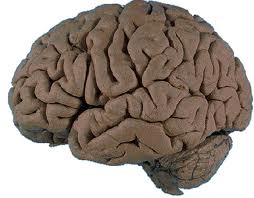12 Findings on Mind, Brain & Education

Mind, Brain, and Education is the first in a nine paper series from JFF called Students at the Center. Like all of JFF’s work, the series focuses on helping students from all backgrounds graduate ready for post secondary education and the 21st century knowledge economy.
Student-centered learning, according to JFF, provides “flexible learning experiences that enable students at various levels to build toward mastery of a common set of core skills. A commitment to addressing the individual needs and goals of each student is at the core of the model.
As outlined in the iNACOL paper Cracking the Code: Synchronizing Policy and Practice for Performance-Based Learning, JFF advocates for “customized pathways,” bridges between formal and informal learning, and advancement based on mastery.
Here’s a dozen conclusions from Mind, Brain and Eduation:
- Students’ brains continuously adapt to the environments where they live and work. As students learning in these places, these experiences gradually sculpt the architecture of the brain.
- Students’ genetic predispositions interact with learning experiences to give rise to a wide range of individual differences.
- Students learning English as a second language are processing written information in somewhat different ways than native English speakers so standard reading instruction techniques may not be the right fit for their needs.
- Mathematics is at least partially dissociable from other cognitive domains and abilities within the domain of mathematics can be dissociable from one another.
- Emotions direct students’ learning processes, helping them gravitate toward positive situations and away from negative ones.
- Education should give students opportunities to practice setting goals, tracking progress toward them, adjusting strategies along the way, and assessing outcomes.
- Education can support the development of emotional regulation skills, and this should be a priority as emotional regulation skills strongly predict academic achievement.
- When students from disadvantaged backgrounds are in high-quality schools, their cortisol levels decrease throughout the day. The better the school, the more the cortisol levels decrease. Therefore, a quality learning environment can help students reach healthy cortisol levels, which lead to better emotional regulation and more favorable learning outcomes.
- Environments that promote positive relationships and a sense of community promote learning.
- Providing meaningful learning experiences with ongoing guidance can enable students at all levels to build toward mastery of a common set of skills.
- This scientific evidence that emotion is fundamental to learning settles longstanding ideological debates concerning whether educators should be responsible for emotional development—if educators are responsible for intellectual development, they are inherently involved in emotional development as well.
- Student-centered approaches to learning require students to be self-directed and responsible for their own learning, which requires executive functioning skills such as goal setting, planning, and monitoring progress.
Authors Christina Hinton, Kurt W. Fischer, Catherine Glennon made a solid contribution in this paper. A summary of what we know about how the brain works is the right place to start for a series on student-centered learning.
For more see a review of John Medina’s book, Brain Rules Schools: what school would look like if we listened to research and Science Worth Reading in the New Year.
Here’s five other JFF reports we reviewed last year:
- Report: Innovations at Scale
- Report: From Remediation to Acceleration
- Report: Assessments for College Readiness in Florida
- Jobs for the Future Launches Credentials that Work
- Jobs for the Future Outlines Policy for Early Graduation Incentives






Stephen Petrucci
Terrific article. More like guiding principles for any school district. Thanks for the research - very confirming for us.